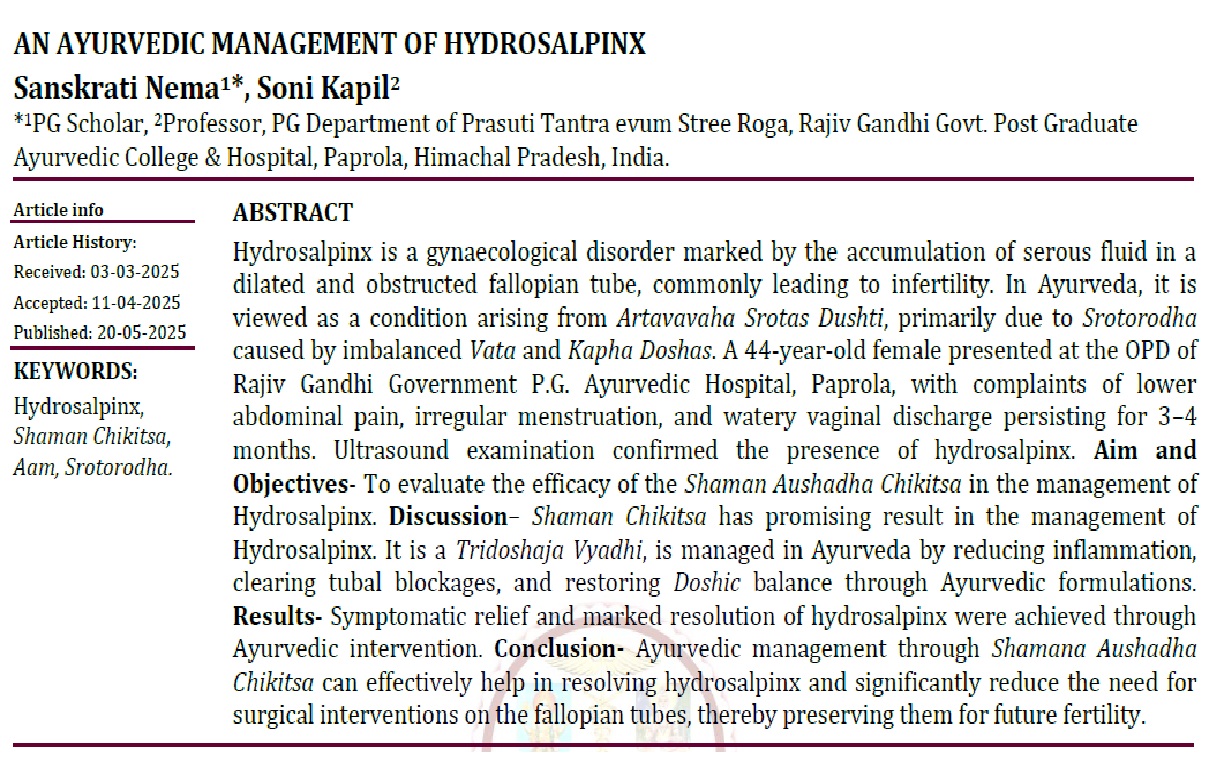An Ayurvedic Management of Hydrosalpinx
DOI:
https://doi.org/10.47070/ayushdhara.v12i2.2012Keywords:
Hydrosalpinx, Shaman Chikitsa, Aam, Srotorodha.Abstract
Hydrosalpinx is a gynaecological disorder marked by the accumulation of serous fluid in a dilated and obstructed fallopian tube, commonly leading to infertility. In Ayurveda, it is viewed as a condition arising from Artavavaha Srotas Dushti, primarily due to Srotorodha caused by imbalanced Vata and Kapha Doshas. A 44-year-old female presented at the OPD of Rajiv Gandhi Government P.G. Ayurvedic Hospital, Paprola, with complaints of lower abdominal pain, irregular menstruation, and watery vaginal discharge persisting for 3–4 months. Ultrasound examination confirmed the presence of hydrosalpinx. Aim and Objectives- To evaluate the efficacy of the Shaman Aushadha Chikitsa in the management of Hydrosalpinx. Discussion– Shaman Chikitsa has promising result in the management of Hydrosalpinx. It is a Tridoshaja Vyadhi, is managed in Ayurveda by reducing inflammation, clearing tubal blockages, and restoring Doshic balance through Ayurvedic formulations. Results- Symptomatic relief and marked resolution of hydrosalpinx were achieved through Ayurvedic intervention. Conclusion- Ayurvedic management through Shamana Aushadha Chikitsa can effectively help in resolving hydrosalpinx and significantly reduce the need for surgical interventions on the fallopian tubes, thereby preserving them for future fertility.
Downloads

Downloads
Published
Issue
Section
License
Copyright (c) 2025 AYUSHDHARA

This work is licensed under a Creative Commons Attribution-NonCommercial-ShareAlike 4.0 International License.


